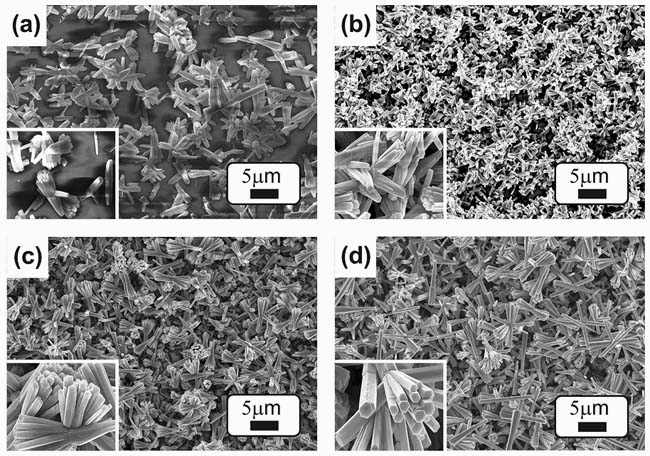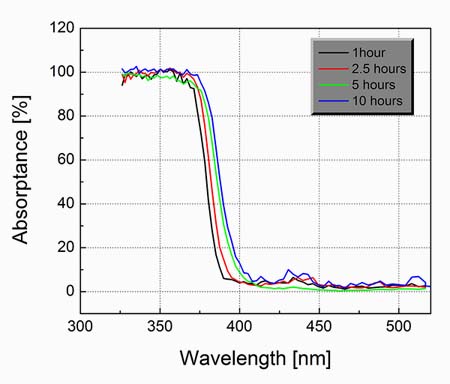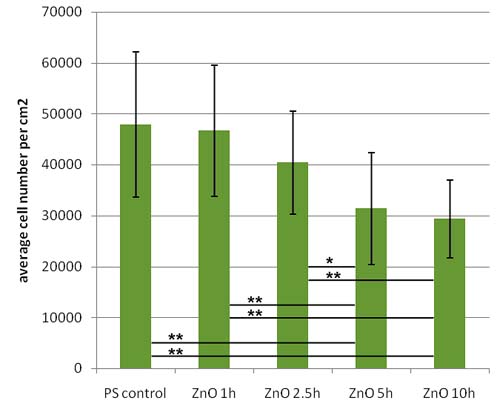Zinc oxide (ZnO) - microrods
Zinc oxide (ZnO) is a degenerate semiconductor with very interesting multi-functional properties. For material science applications, ZnO has wide direct band gap (3.37 eV), high refractive index (2.0041), high thermal conductivity, large excitation binding energy (60 meV), and UV-protection properties. Furthermore, because of its biocompatibility and antibacterial properties, ZnO is also used in a number of both exploratory and well-established biological applications.
Various morphologies of ZnO have been developed using different methods like chemical vapor deposition (CVD), thermal evaporation, pulsed laser deposition and hydrothermal method. The low temperature hydrothermal method was successfully used in this study to synthesize hedgehog-like ZnO structures on glass substrates, because of its simplicity, low operating cost, and easy scale-up for mass production.
The influence of the growth time on the morphologies and dimensions of the hydrothermally grown ZnO structures as well as the influence of the ZnO structures on the cell adhesion and cell spreading were systematically studied.

SEM images of the as-grown ZnO microstructures with reaction time (a)- 1,
(b)- 2.5, (c)- 5 and (d)- 10 hours.

Optical absorption spectra of the ZnO structures grown of glass substrates at different growth time (1, 2.5, 5 and 10 hours).

Number of cells per cm2 adhered after 48h cultivation on different ZnO surfaces.
(* significant difference - alpha level = 0.05,** significant difference - alpha level = 0.01)

Grayscale immunofluorescence images of SAOS-2 cells cultivated on different ZnO surfaces, stained protein – vinculin
(cell focal adhesions). Scale bar 40 μm
